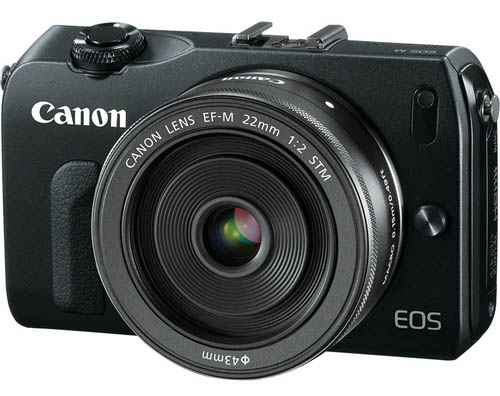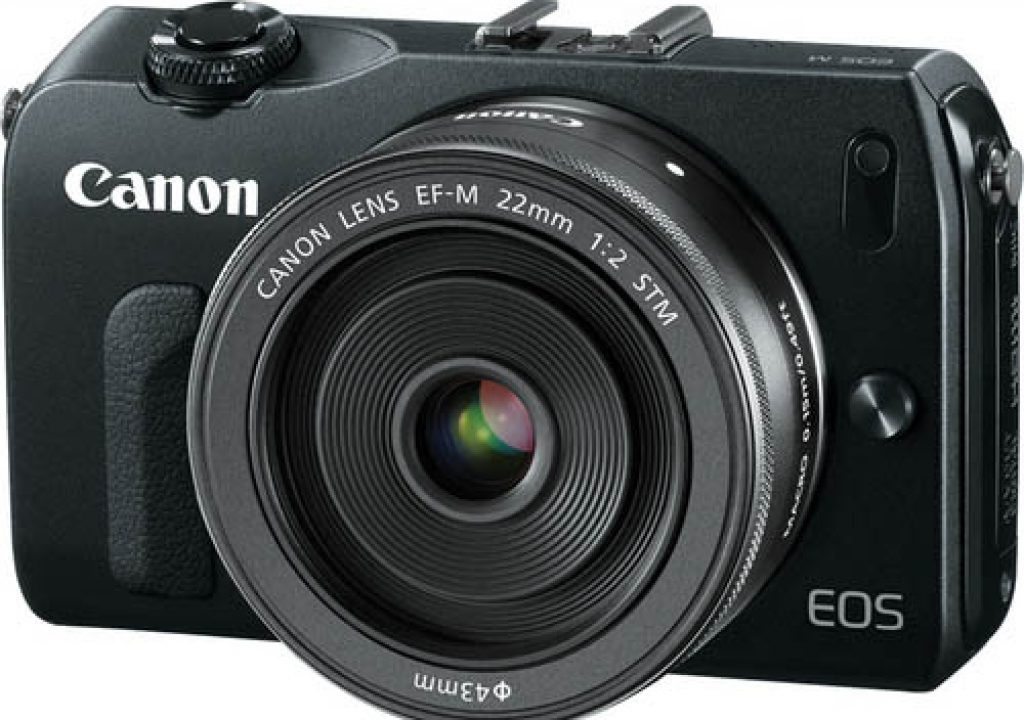
Canon have finally joined the rest of the major industry players by releasing a mirrorless camera system called EOS-M, along with a new lens system called EF-M. The first camera in the range manages to pack an 18MP APS-C sensor and 3″ touchscreen into a camera that is considerably smaller than their high-end G1 X point and shoot camera.{C}
UPDATE: September 17th 2012
As per some of my guesses when I originally wrote this article, Canon have today announced the EOS 6D full frame camera at a $2100 price point.
Rumors of Canon's launch into the mirrorless market have been swirling around for a couple of years now, it only seemed logical. When the G1 X was launched at CES 2012, with a much larger than normal sensor for a point and shoot, many people assumed that the production and development cost of such a sensor would be shared with their inevitable upcoming mirrorless system. Creating a whole new sensor size as was seen in the G1 X is an expensive project after all. As the launch date for the new system approached though there was increasing chatter about the system using an APS-C sized sensor and that did in fact turn out to be the case when the camera was launched this week. So what does this mean for the future of the Canon lineup ? I believe it might signal the beginnings of a long term plan to shift the sensor sizes across their lineup. Let me explain……
When Nikon launched their 1-System mirrorless camera they made a very conscious decision to put a sensor in it that was smaller than micro fourthrids. In fact it was barely bigger than a regular point and shoot sensor. By doing this they have protected sales of their DSLR systems as few people are likely to waiver from a DSLR purchase in favor of the 1-system, they are just far enough apart. Sony on the other hand does have APS-C sized sensors in their mirrorless NEX cameras and I can tell you that I have seen many many of these in peoples hands, rightly so as they got rave reviews. The thing is though that I don't think I've ever come across anyone who is shooting with the Sony SLT cameras like the A57. Why not ? Well many if not most of the features of that camera are available in the NEX-5 and NEX-7 , cameras which share a sensor size and are probably less than half the size. When faced with that decision in your local Best Buy, why would you be tempted to go for the larger camera?
The same applies now for the EOS-M when you compare it alongside the recently launched Rebel T4i. They both feature 3.2″ touchscreens and 18MP APS-C sensors. There are some small subtle differences but to the average consumer the feature set between the two is going to look identical except that one will potentially fit in your pocket. I'm sure that Canon has adjusted their Rebel series sales predictions accordingly but it has to make you wander about their long term plans. My belief is that we are seeing the beginnings of a shift to a DSLR lineup that features only full frame cameras and that crop-sensor cameras will be relegated to mirrorless cameras. Remember that in the film days there was no such thing as a crop camera at all, everything was 'full frame' or 35mm. Earlier this year Canon phased out the 1.3 crop EOS- 1D camera entirely , choosing to combine the old 1D with the 1Ds into the new flagship 1DX.
There is a couple of other factors that lead me to believe this is a direction Canon might be taking sooner than expected. Firstly they released an unprecedentedly large firmware update for the EOS 7D last month. We've seen firmware updates in the past but usually to correct niggling bugs or in the case of the famous 5D Mark II update, to add features that the community was clamoring for. The 7D update was a total surprise though, especially when you consider that by Canon's regular timeline, the 7D should be up for replacement at Photokina this September. Why release an update that adds extra functionality to that camera unless they are trying to prolong its life in the marketplace a little longer ? Then I look at the updates to the 5D Mark III particularly in the area of the auto focus. It features a system almost identical to the one found in the $7000 EOS-1D X, a camera designed for sports shooting. Yes the system in the Mark II was terrible, but an upgrade to the 1D AF system whilst much appreciated, seems like more than they needed to do unless they are trying to reposition the camera's usage somewhat. When people ask me what camera they should buy to shoot sports, that isn't as expensive as a 1D I always used to say 7D , but now I tell them to get the 5D Mark III. The third thing that can't be ignored is the persistent rumors of a cheaper full frame camera from both Nikon and Canon. I think at this point it is fair to say that both these companies will be introducing such cameras in the coming few months. It also won't have escaped Canon's notice that there is a market for a 'pro' mirrorless camera as demonstrated by the runaway success of the Sony NEX-7 , the Olympus OMD EM-5 and the Fuji X-Pro 1. The common features amongst those cameras ? A viewfinder and more easily accessible manual controls. These are three cameras that suppliers could barely keep on shelves for months after their launches.
Canon's current DSLR lineup consists of the Rebel T4i ,60D, 7D, 5D, 1D. It's a pretty broad lineup and when you add the EOS-M onto the front of that you create more consumer confusion. If I had a dollar for every time someone had e-mailed me to ask me whether they should get the 60D or the 7D I would be a rich man. And take a guess what the most read page on my personal website is ? Yep, 60D Vs 7D. So there is already some cross over in their DSLR products that is causing confusion and now add in the on-paper seemingly similar EOS-M Vs T4i. Something has to give if they are going to introduce another full frame camera into their lineup as I suspect they will this Autumn. It doesn't have to be a direct replacement though and that is something to remember. The elongation of the 7D's life with the recent upgrade could be simply to ease the transition.
We could end up seeing something like this where the APS-C sensor gets confined to their mirrorless system and the DSLR range returns (like the film days) to full frame. For the consumer this makes a much easier to understand system. Physically small camera has the small sensor in it. Larger DSLR has the big sensor. As for the large megapixel camera at the bottom there…. well Canon has never been one to let Nikon do something on their own. The huge success of the D800 will prompt Canon to come up with something and it might not be full frame, again there have long been rumors of a camera with a larger than full frame sensor. It wouldn't need to be markedly bigger, just maybe a 4:3 aspect ratio sensor like a medium format back. I think such a transition might take a couple of years so it is quite possible we will see a 70D at some point but I do think the days of the 7D are numbered.
Of course these are all speculations, I'm not privy to any insider information at Canon but to me it makes a lot of sense. What do you think ?
Like what you read?
- Follow Dan on Twitter: @DanCarrPhoto
- Read more of Dan's writing: ShutterMuse.com
- Get a FREE photography eBook written by Dan

